


Are you sure you want to reset the form?
Your mail has been sent successfully
Are you sure you want to remove the alert?
Your session is about to expire! You will be logged out in
Do you wish to stay logged in?
Please note that you will need to be logged in to view the content featured below
Food has been a subject of art as long as art has existed. From hunter-gather cave paintings to Greco-Roman murals and twenty-first century culinary photography, the culture of consumption – both what we eat and why we eat it – has fascinated artists, aesthetically and philosophically. Still life, the practice of depicting commonplace objects, often features foodstuffs as emblems of status, wealth, class, and mortality. Fruits rot but those immortalised on canvas will outlast the artist. Like the myth of Zeuxis and Parrhasius, in the tradition of still life, there’s usually more than meets the eye. Read more here.
Tending allotments, home-grown veg, and farming local produce recalls more similarities perhaps with Neolithic agriculture from around 12,000 years ago than you might think. Close proximity between settlements and food production was maintained until the agricultural Green Revolution in the mid-twentieth century. Today modern ideas of landscape architecture raise vital questions of resource management and legislative mechanisms, from policies to planning, security, sovereignty, integrity, locality as well as the design of food systems and urban agriculture. Read the chapter here for more on plant legacy and agrobiodiversity.
Supermarket aisles stock thousands of perishable goods. Competing brands jostle for attention and real estate on shelves across territories worldwide. Savvy concept designs for artwork, branding, and packaging can provide innovative solutions to more competitive, sustainable, and economical ways to make sure a product is snapped up by customers. Spanning concept generation, market research, and a case study of Longview Vineyard, click the link to read more about food and packaging and take a deep dive into successful product design and how consumables end up in our cupboards.
What makes Innocent, the ‘little tasty drinks’ company, such a hugely popular brand? Already a hit with adults with its eye-catching, naughty-but-nice branding, the company launched a new product for kids. Read this chapter to find out how design management helped make the product launch a success.
From dinner plates to copper plates, etching – the practice of producing an image with a needle on a metal sheet, coated with an acid-resisting ground, for printmaking – comes from the Dutch word etzen meaning ‘to eat’. In aquatint, a medium often paired with engraving practices like etching, acid is said ‘to bite’ away at the metal plates used to create the image in the printing process. For more on etching and other experimental and printmaking techniques, following the link to the relevant chapter.
Images above and on the homepage are courtesy of Getty Images.
Delve into the dark art of fright, fear and the unknown
Horror is an enduring genre of the silver screen. Art History for Filmmakers explores the four principal categories of the genre: religious horror, supernatural horror, body horror, and monsters – from dragons to giants and aliens. “Horror . . . contracts, freezes, and nearly annihilates [the faculties],” writes Ann Radcliffe in “On the Supernatural in Poetry”. Read the history behind fright in film, including Goya’s influence on Guillermo del Toro and the reprisal of Old Testament terror in the blockbusters of today.
“Art consists in eliminating,” says F.W. Murnau, director of Nosferatu: A Symphony of Horror (1922). “For just as you . . . suggest light by drawing shadows, so the cameraman ought to create shadow too.” It’s a cliché to say that light cannot exist without darkness, however their interplay is thematically and technically integral to cinematic horror. Released after the Great War, Murnau’s Dracula-inspired classic is a masterpiece of chiaroscuro. If art consists in elimination, so does lighting in cinema – and Nosferatu is famous for its innovative use of directional light. It can divide space, mask or tease character, and selectively draw the eye. Read about what we do in the shadows.
Animators, through stop motion, digital or flip-book style animation, are uniquely placed to bring fantastical beasts and monstrous dual states to life. Simon Ward-Horner, who animated hit films such as Space Jam, describes how the art style and its techniques are particularly suited to portraying Dr Jekyll-like metamorphoses: “A morph has the outlines of one body shift to form the shape of a new one. This kind of transformation is extremely effective in horror scenes.” If you’re interested in grizzled werewolves, changeling witches, or the decrepit portrait in a young man’s attic, this one’s for you.
From antique poison bottles to skull-inspired memento mori rings, jewellery-maker Theo Fennell’s designs are famous for being witty, quirky and romantically macabre. His previous clients include Elizabeth Taylor, Elton John, Lady Gaga and the prince of darkness himself Ozzy Osbourne. Fennell opened his first fine jewellery shop in Chelsea, London, in 1982, with his wares later appearing in prestigious stores such as Harrods, Selfridges and Harvey Nichols. Read an interview with the artist whose work includes solid silver Marmite lids engraved with ruminations on the transience of all things (“sic transit gloria mundi”).
In Creative Vision, Jeremy Webb lifts brief sketches of early childhood memories from his notebook. He recalls how images by Ladybird Books’ illustrator Frank Hampson simultaneously repelled and intrigued him; he recalls the absurdity of pelicans and how unlikely they look; he recalls, too, “the spine-tingling power and emotional impact” of photographer Robert Doisneau’s The Higher Animals (1954). Perhaps, Webb suggests, his life experiences growing up had a significant effect on his own photography – that even shock and repulsion are vehicles of revelation. Read Webb on the process of excavating memory for creative inspiration.
Images above and on the homepage are courtesy of Getty Images.
Explore the relationship between ethics and activism in the arts
Graphic design has a long and complex history when it comes to discussions of ethics. Used in both war propaganda and charity fundraisers it has the potential for harming as well as helping society. Good: An Introduction to Ethics in Graphic Design, shows how individual responsibility as a graphic designer has changed as our personal freedom has increased.
Communication Design: Insights from the Creative Industries explores the idea of social responsibility through three different design companies: a global advertising agency, an accessibility focused graphic design company, and a digital design agency. Each interview offers insight into designers' first-hand experiences of activism, advocacy, and the power that design can have as a catalyst for change.
Design activism can be characterized both by its clear intent (the social or ecological cause being pursued) and the often radical nature of its practice (how design is used, and by whom). This chapter from Design for Sustainable Change explores design as a form of direct action to transform society and the ways in which we live. It examines whether you can be a design activist while working as a hired professional and how radical designs have to be in order to be considered 'activist'.
Although activist landscape work is rare, partly due to the public and usually permanent nature of landscape-based artistic interventions it can be used as a powerful means to invoke transformative experiences or provoke subversive, intentional and political agendas about environmental and social concerns. In Landscape Architecture and Environmental Sustainability: Creating Positive Change through Design Joshua Zeunert unearths examples of activist art that have been created from the landscape.
Graphic design has a long history of turning the persuasive skills of advertising to political ends. However, product designers have an equally important role. Thinking: Objects: Contemporary approaches to product design looks at the relationship between product design and politics, whether that be through methods of production, designing articles of 'conspicuous consumption', or ensuring they can be recycled or reused.
Animation in Context looks at how our beliefs, values, identities and way of life have become increasingly shaped through the media we consume. The chapter explores the role and responsibility that animators therefore have in perpetuating or challenging stereotypes as well as the effect that distorting facts and truths can have on communities and individual consumers.
The choice of what to put in and leave out of the frame is a dilemma every photographer faces but with documentary photography, which usually involves marginalized people, that dilemma also includes an ethical component. In this chapter from Train Your Gaze, Roswell Angier focuses on the moral critique of traditional documentary practice, particularly photojournalists who work in the world’s crisis zones, producing pictures that are affecting, intrusive and often heartrending.
Semiotics is a way of seeing the world, and of understanding how the landscape and culture in which we live has a massive impact on all of us. Every day we are unconsciously interpreting the meaning of signs around us – from traffic lights to product logos, the shapes of cars, the architecture of buildings, and the design of cereal packaging.
There are three main areas that form what we understand as semiotics: the signs themselves, the way they are organized into systems, and the context in which they appear. Visible Signs: An Introduction to Semiotics in the Visual Arts, explains and demonstrates key theoretical terms, looks at how to appreciate the layers of meaning in a sign and how readers interpret the way a sign is expressed.
If a scene is to have the desired effect, the filmmaker needs to know exactly how the screen communicates and how images will be understood by the audience and will work upon their imaginations moment by moment. This is where semiotics is useful. A movie is a vast outpouring of signs. In The Language of Film, discover how to control and channel this flow of information in order to create the desired illusion and shape the audience’s experience.
An aesthetic user experience is one where the user’s concern for their own self is temporarily lost in an effortless involvement in the moment, and their sense of time within the interaction is altered. Interface Design shows you how visual communication basics can combine to produce positive interactive user experiences with practical advice on improving communication between designers and developers, and a tantalizing look at designing interactivity for all five senses.
Photographers make a series of decisions to enhance or encourage a particular reading of their work: the choice of black and white or colour; how to compose the image within the frame – what to include and, equally important, what to exclude; what is the angle of view; what is in focus; and so on. Reading Photographs explores what it means to make a representation of the world and how photographing the world affects our understanding of it and of ourselves.
Animation combines many of the formal compositional traits of traditional painting with the time-based properties of camera and film editing. Discover how symbols or objects, environments and composition can be used in an image to create narrative meaning in Animation in Context and how to translate these ideas into layouts, set designs and beat boards.
Products communicate to us through visual language. Like spoken and written words and sentences, this language can be split into units and studied. On their own these signs would be meaningless but they become comprehensible when compared with other signs within a system. Explore the perception of form and some of the tools designers use to imbue their products with meaning in Thinking: Objects.
Design research is about understanding real people in the context of their everyday lives and then using that knowledge to inspire imagination and inform intuition. Explore the many ways in which research can be conducted for creative disciplines and how to find the right research method for your project.
It goes without saying that your research project should be based on a subject that really interests you and that you are capable of undertaking. This research can be used to introduce yourself to potential employers and will demonstrate up-to-date knowledge and findings that are pertinent to your expertise. With that in mind, deciding on a research topic can seem like a stressful decision, but it doesn’t have to be. Discover the best ways to ensure that your research topic is the right choice for you with a helpful checklist.
Understanding the relationships between shape, colour, organization, and composition, alongside the cultural signposts embedded in graphic communication, is at the heart of effective design. Explore the role of design literacy in visual research through iterative making, problem finding, and problem solving.
Learn how a visual journal, workbook or sketchbook can act as a physical manifestation of your thought processes. It can be a space to play, a sounding board for developing different ideas and a place to track developments.
There are many ways that research results can be looked at and understood, so it is crucial to take time to reflect on the information you have gathered, analyze your findings and then use the process of synthesis to narrow your focus and draw conclusions. Learn how data can be categorized, synthesized, reflected upon and analyzed, and how this can develop and inform your design practice.
When designing a game, you may already have an idea of the personality traits of the character or characters you want to create. But how do you go about developing them into someone really unique? A good place to start is thoroughly researching the world the character inhabits and understand the context in which your characters’ lives play out. Discover the principles of character design, how to build a character profile and make your character real.
In a rapidly changing landscape with new digital services being created and adapted every minute, research is vital to understanding the needs of users and to help them achieve their goals. Explore the key challenges faced when undertaking this research through two unique case studies and find out how to develop robust discussion frameworks that enable a two-person research team to conduct rich research discussions.
Images above and on the homepage are courtesy of Getty Images.
Sketching often marks the first stages of work in the visual arts, it can be a way to record early ideas for further development, demonstrate key principles, explore design options, or even work through problems. It is typically carried out by drawing; whether by traditional means like pen, pencil, water colour, or by digital tools; but it can also involve working with 3D models to perfect a plan or concept. Discover how sketching forms a fundamental part of various visual arts disciplines, underpinning many different design stories.
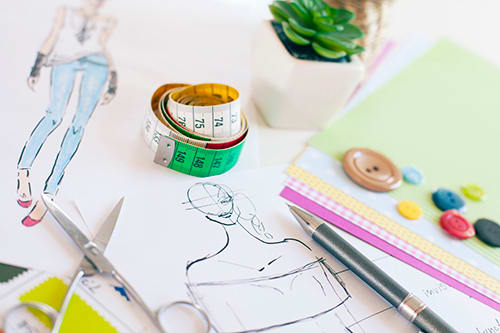
The sketchbook forms a very personal but also public part of the creative process within fashion design. It is a place for playing, reworking and risk-taking. For those seeking a career in the fast-paced fashion industry, the sketchbook can be a quick way to display your creativity and originality. Discover what sets the best fashion sketchbooks apart, from organization and presentation, to visual examples, and interviews with fashion design professionals.
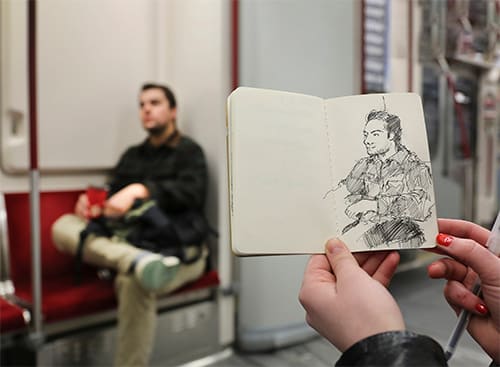
In the field of visual journalism and reportage illustration the methods and materials employed for sketching are crucial. These tools support the artist’s ability to ‘draw on the spot’ as a situation unfolds, so they can capture and report a subject in an engaging and accurate way. But has technology and digital media helped or hindered this process? The nature of a reportage artist’s equipment list depends on their personal preference and the unique situations in which they’re working, so explore practical exercises and a case study to begin developing your own style.
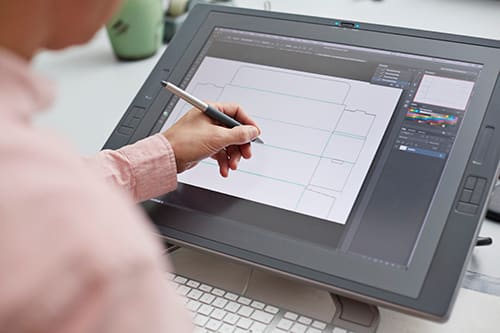
When it comes to meeting a design brief and presenting ideas to a client, a simple drawing may be as effective as a grand presentation if you cover the right points and are clear about what you are saying. How do you go about presenting ideas successfully? Use of digital technologies such as augmented reality can immerse clients in your vision, but a sketch is much quicker and more flexible than a digital rendering and goes a long way to explaining the thinking behind an idea at later stages.

The art of capturing movement is pivotal to all drawing and in particular to drawing for animation. Animators often need to use memory in tandem with direct observation to draw a dynamic action, such as dancing or playing sport, rendering a continuous action in single pictures. Discover how sketchbooks can help capture everyday observations, and build up a bank of sketches for reference, adaptation, and inspiration for future work.
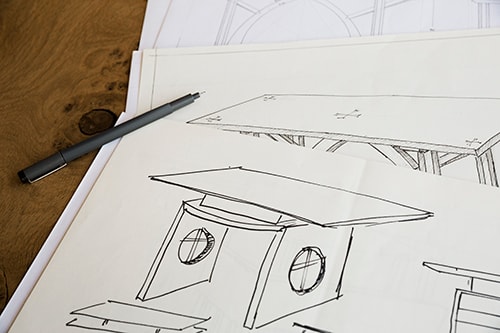
‘Thinking drawings’ and ‘visual thinking’ are terms taken from the field of psychology that can usefully be applied to interior architecture. Thinking drawings in interiors are early design drawings where disparate ideas are arranged on a page so that they can then be worked out, thought about, drawn, tested, rethought, redrawn, retested, until they slowly take form. Take a look at examples of both analytical sketches as well as sketches to remember and observe, in the context of interior architecture drawing.

Pencil sketching is a really effective way to quickly externalize ideas when developing user experience design. Sketches on paper can be captured using a digital camera or scanner, edited, stored and shared online, alternatively a number of tablet devices offer a similar experience to sketching on paper using a stylus or finger drawing. Read about the advantages to these approaches and the wider context of their use in UX design.
Images above and on the homepage are courtesy of Getty Images.
"Color aesthetics may be approached from these three directions: Impression (visually), Expression (emotionally), Construction (symbolically)." ~ Itten Johannes, The Elements of Color (1970)
Color is central to each of the visual arts. Selecting just the right shade can mean the difference between harmony and discord, between a satisfying design and going back to the drawing board. Discover some of the ways color can impact on your work and how creative practitioners incorporate it into their work.

Interior designers often use color theory to enhance both the physical and psychological properties of their work. Color can physically communicate how space is organized by highlighting spatial zones and areas of circulation; color through this process can clearly be used pragmatically as a visual marker. But color can also radically alter mood and be central to challenging our perception of a given space – this introduces color psychology into the realm of interior design.
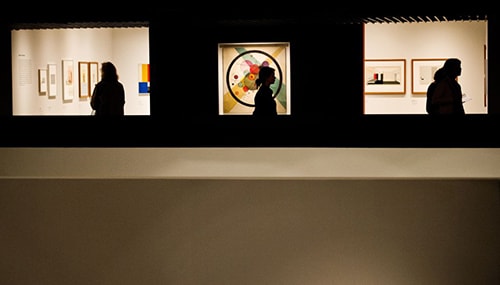
Wassily Kandinsky (1866–1944) was hugely influential in developing an abstract art that invoked color as a major component. Having extensively studied the history of color theory (by writers ranging from scientist Sir Isaac Newton to the poet Goethe), Kandinsky explained how we experience color. Kandinsky was writing in 1910, before color film, but his impact can be seen in cinema as diverse as Jacob’s Ladder (1990) and Minority Report (2002).

The word ‘photography’ has its source in two Greek words, phos meaning light and graphis meaning stylus or paintbrush. Thus photography is often described literally as painting or drawing with light. Learn how taking the time to look around and really notice the way light works can benefit your work. Study how it reflects from different surfaces, how it creeps in to the shadows and how it appears dressed in every color of the rainbow.

Choosing a color palette requires a mixture of analysis, understanding basic principles of color theory, trial and error, and personal preference. For some projects it will be appropriate to create a palette using several different hues, but in other situations a limited color palette will be more successful. Designers often excel when working within specified constraints, so it can be helpful to limit the number of colors you will work with before you begin a project.
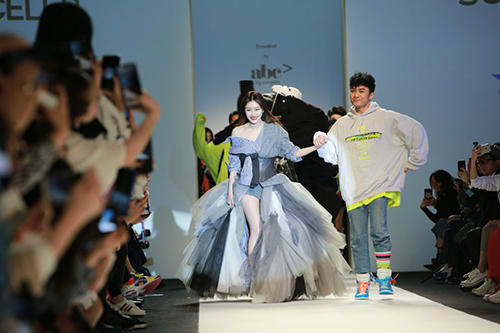
Color often appears in catwalks a few seasons before it tips over into mainstream, so the catwalk is a great place to understand the future direction of color trends, and retail is a perfect place to view mainstream color direction. Have a look at some of the most recent catwalks from different cities to see if there is a common color that appears in all of them. How long will it take before it appears on your high street?
Images above are courtesy of Getty Images.
"The first rule of sustainability is to align with natural forces, or at least not try to defy them." ~ Paul Hawken
The thorny issue of sustainability is of fundamental importance across the visual arts as designers, makers and artists seek to adopt more environmentally friendly practices. Discover the practical solutions and ethical approaches employed by practitioners in order to meet the challenges of creating a more sustainable, circular economy across disciplines.
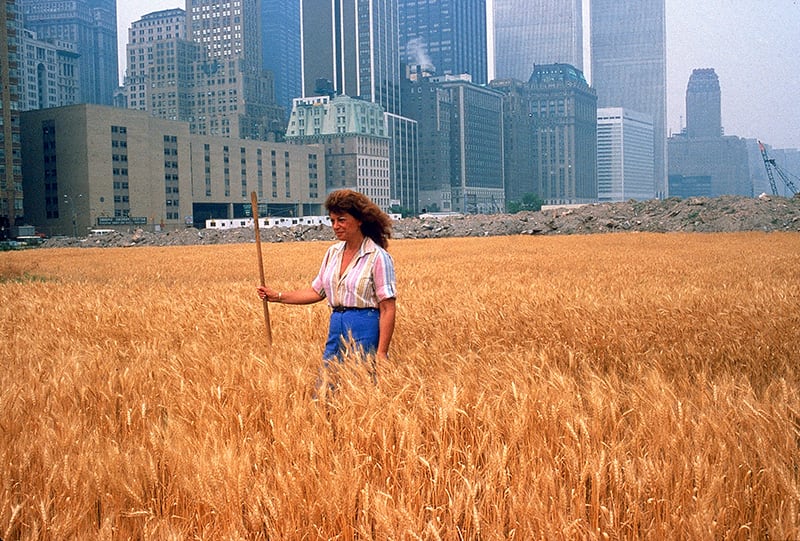
The types of activism that come to mind when considering ways to provoke action and tackle sustainability issues may not immediately include landscape art. Social, environmental and political activist pieces which use or engage with the landscape can however be some of the most powerful catalysts for inspiring critical thought and connection with the environment. Explore evocative examples of land art, and the fine line between pastiche and the profound.

How do we make best use of existing space? ‘Reduce/Reuse/Recycle’ is especially relevant to interior architecture, as the reuse of an existing buildings to accommodate new use constitutes a very sustainable approach. Find out more about confronting the overall lifecycle of a building and explore fascinating examples of sustainable adaptation, reuse, and green design as well as the practical processes which underpin them.

When it comes to balancing human progress and environmental needs globally, the importance of nuanced, measurable models of sustainability cannot be underestimated. While on a more local level, the simplification of sustainability down to more digestible, single-issue concepts - such as reducing carrier bag usage - can cause individual complacency and even distract us from seeing the bigger picture. Read more about sustainable development; from the three pillars of sustainability to why we might be overusing the ‘S’ word.
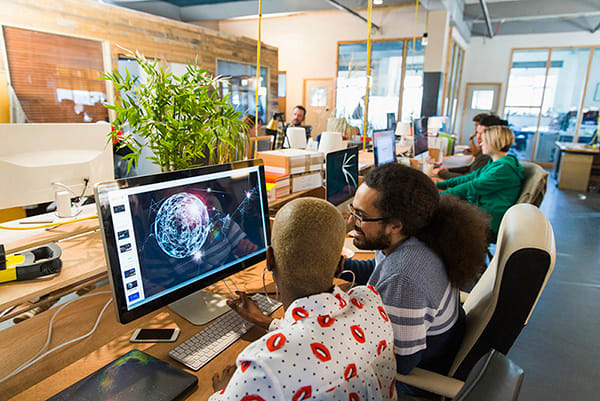
Combining professional success in the design world with ethical beliefs can seem daunting when beginning your career. Breaking up the process into practical steps can be helpful for creating sustainable, low-impact practices in the workplace and within freelance work with clients. Take a closer look at frameworks and methodologies for adopting sustainable practices.

Photography can arguably help people to visualise our changing physical landscape and understand the urgency of the environmental crisis - from the famous ‘Earthrise’ image taken from lunar orbit in 1968 which evoked Earth’s fragility, to the photographers exploring rising sea levels due to global warming. Explore photography’s potential to generate meaningful awareness but also to aestheticize the issues, so that the collective sense of urgency is eroded.
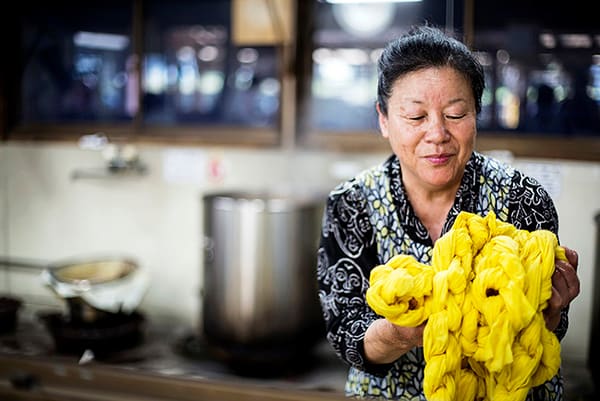
Stella McCartney is known as one of the most ethically aware designers in fashion, incorporating sustainable principles into her use of materials and her business as a whole. She has also been a key figure in opening up a wider debate around sustainability in the design industry. Find out more about ways to apply sustainable strategies to each stage of a garment’s life cycle.
Images above are courtesy of Getty Images.

Visual artists often look outside of their own discipline for ideas. Developing a Fashion Collection explores how fashion designers use historical, cultural, and environmental movements as inspiration for their collections. In Art History for Filmmakers you can see how directors like Martin Scorsese and Peter Greenaway have borrowed the visual language of composition, colour and lighting from artists like Caravaggio and Rembrandt to help their storytelling. Similarly, Creating Interior Atmosphere shows how the staging techniques of theatre and cinema can add drama to even the most humble real-world interior design.

If the creative muse doesn’t strike when it’s needed, then designers and artists fall back on the creative thinking techniques discussed in Gavin Ambrose’s Design Genius. In Making Photographs Mike Simmons shares techniques for producing original, meaningful photography by actively engaging with the creative process. And, of course, inspiration isn’t the exclusive domain of artists and their quest for self-expression – it’s also vitally important to every commercial brand on the planet. In Brand-Driven Innovation you’ll learn how to balance strategy and structure alongside creative visionary ideation and imagination.
Images above are courtesy of Getty Images.